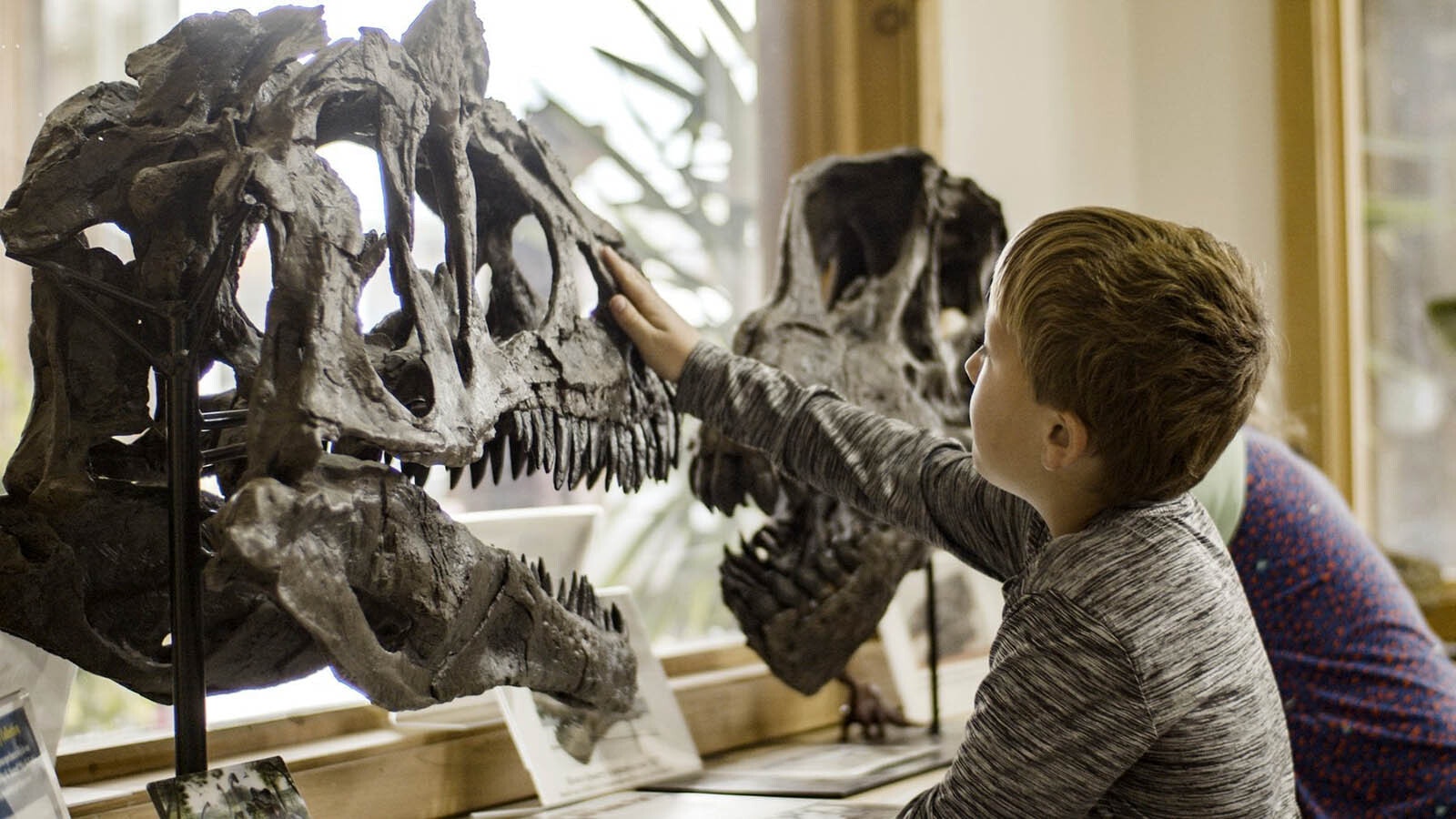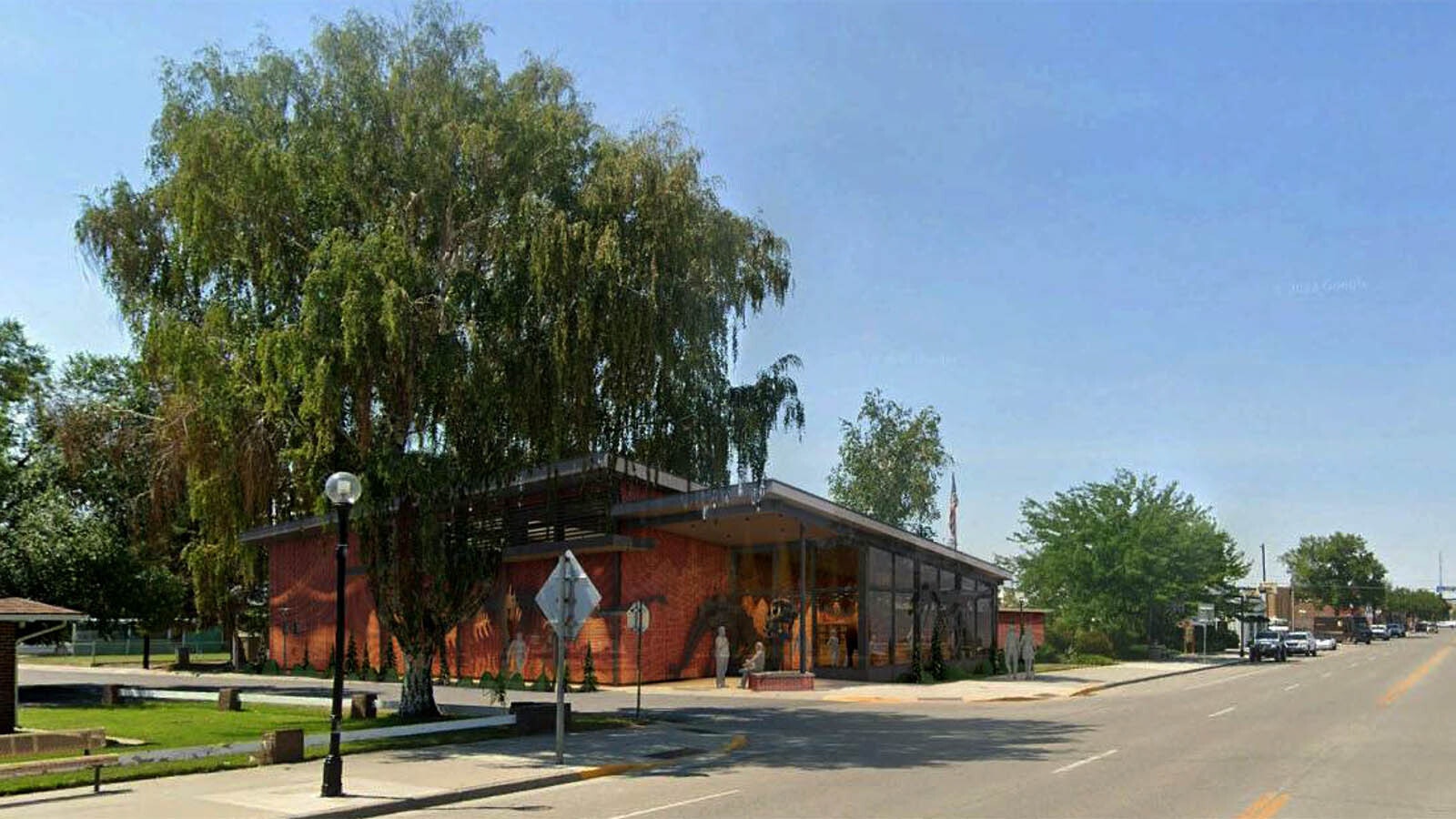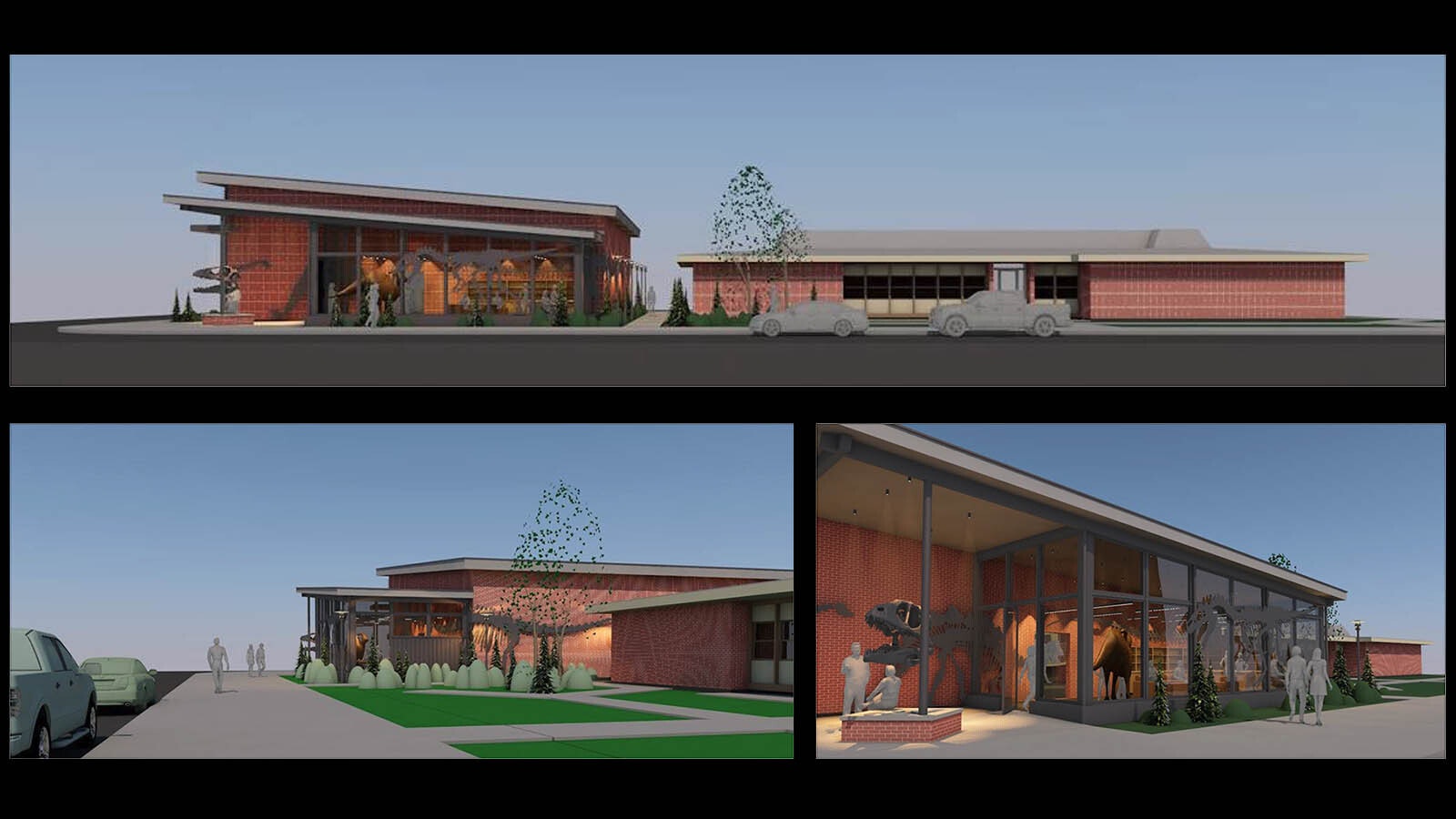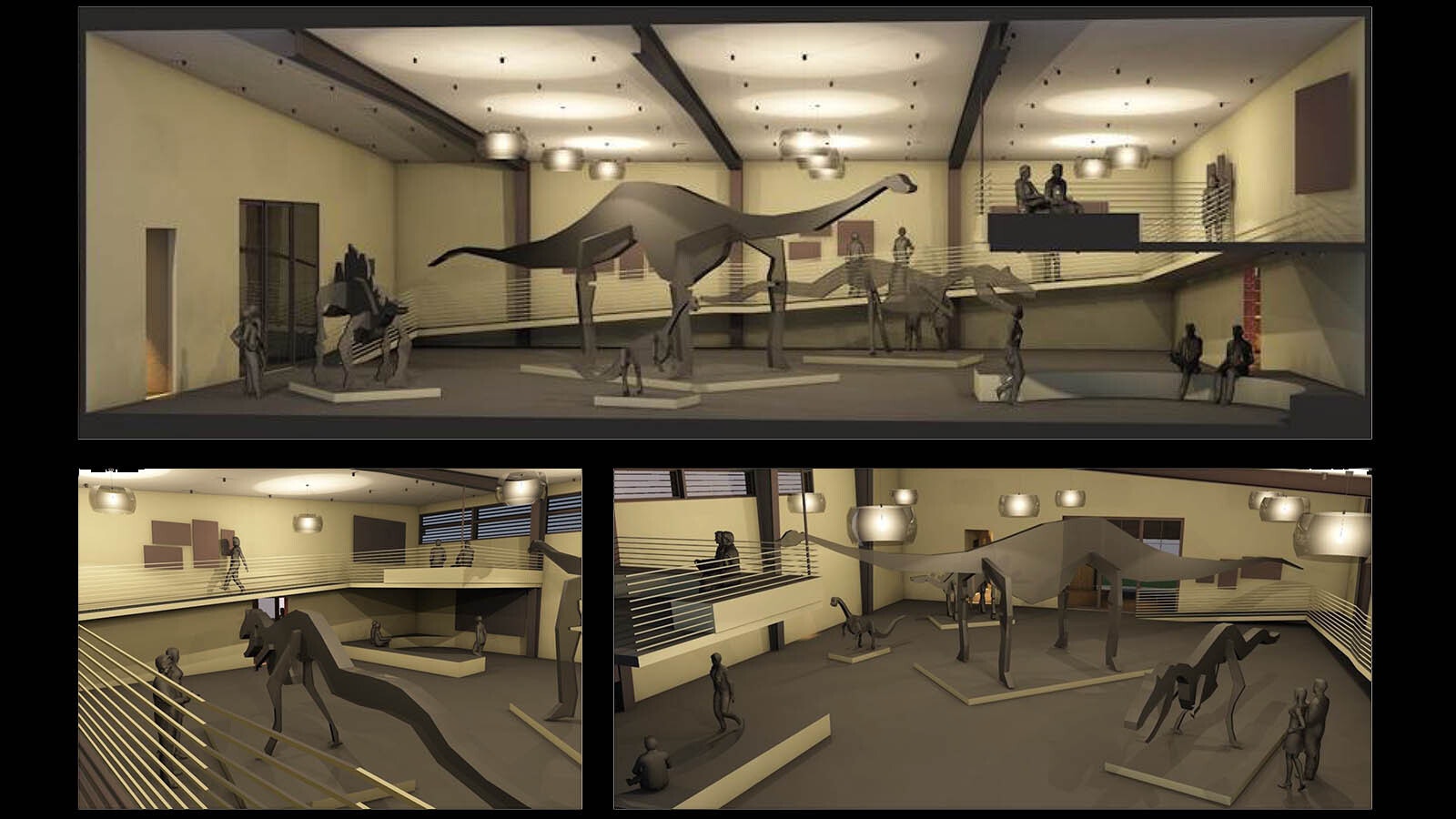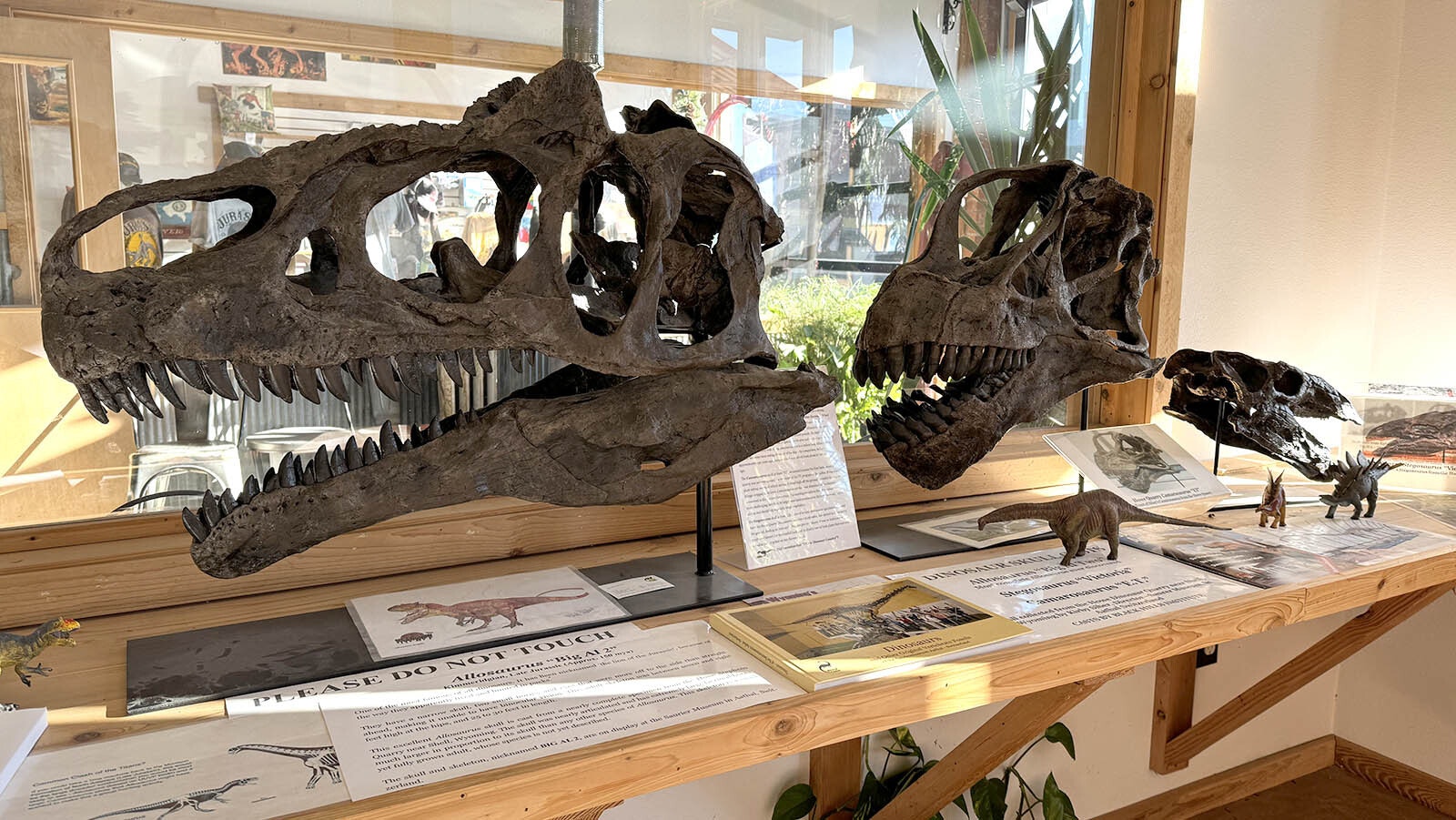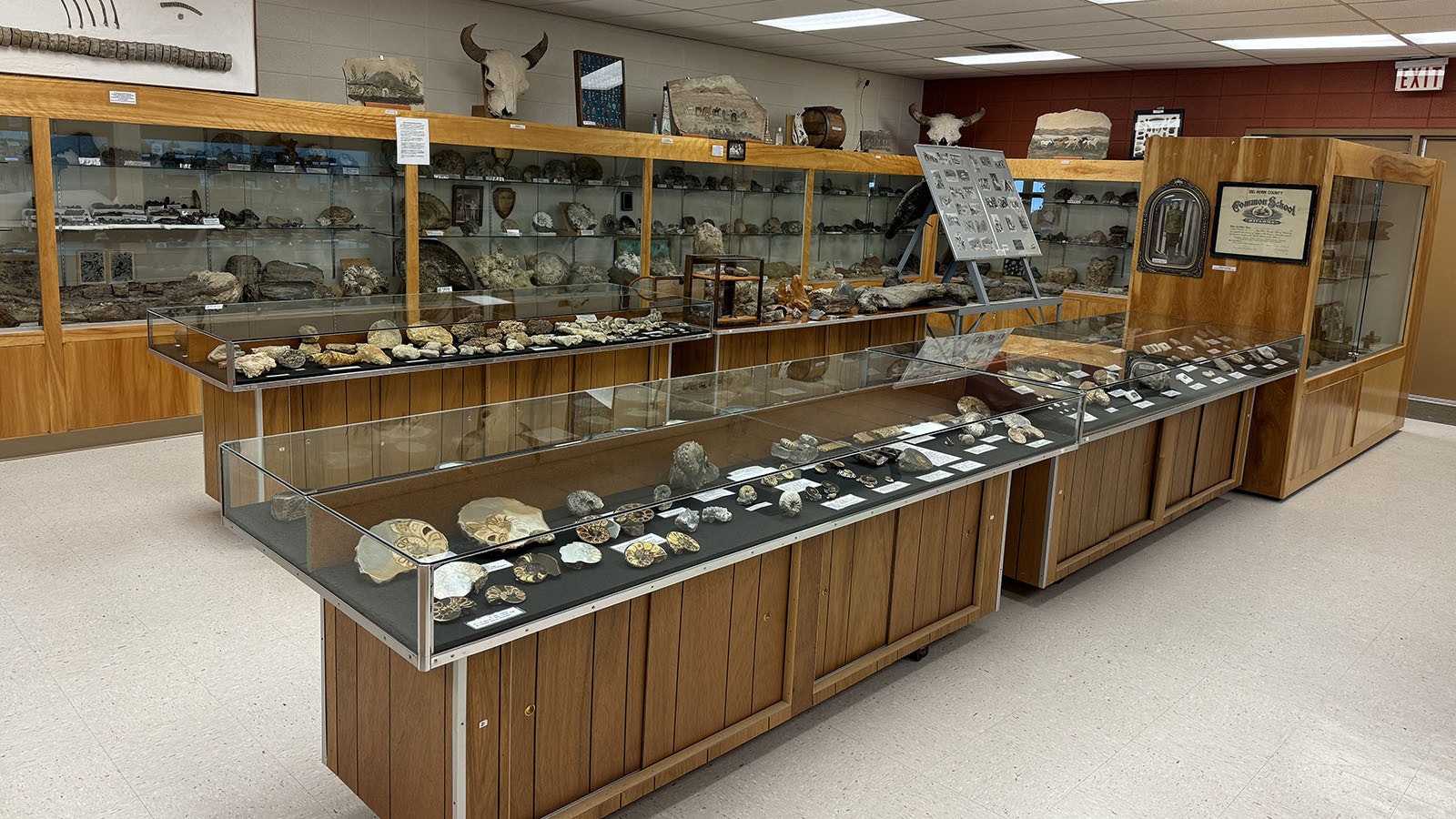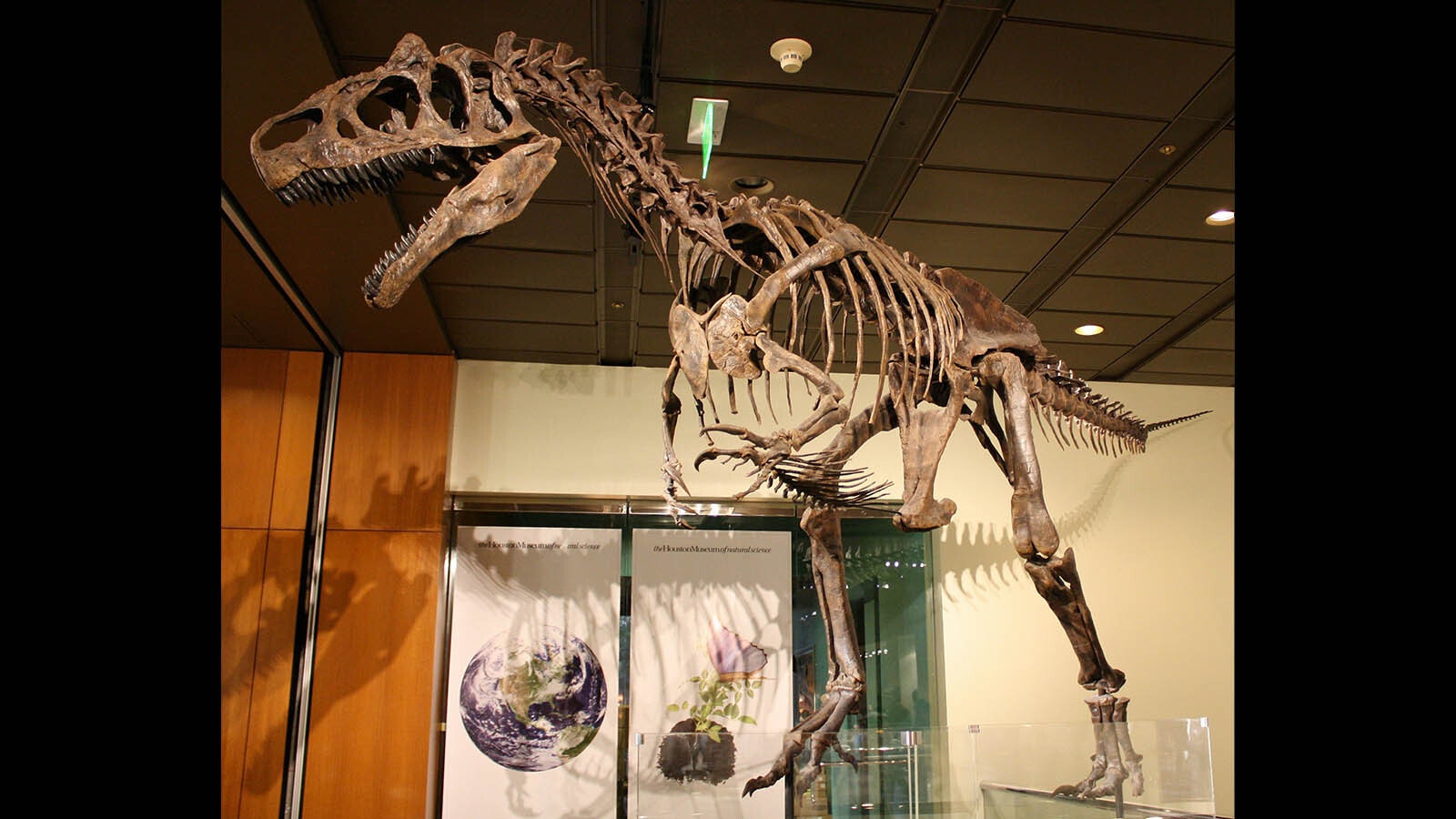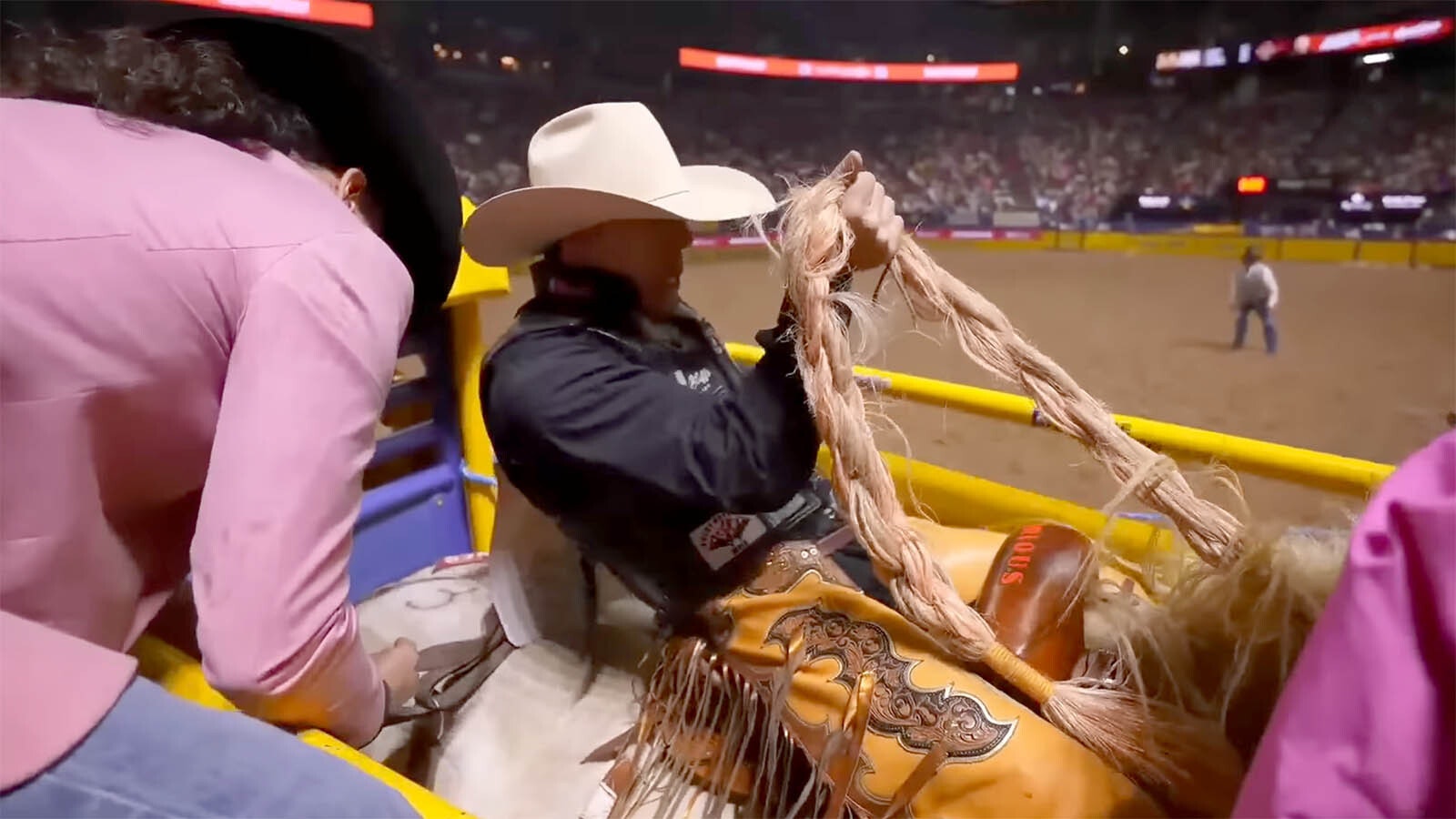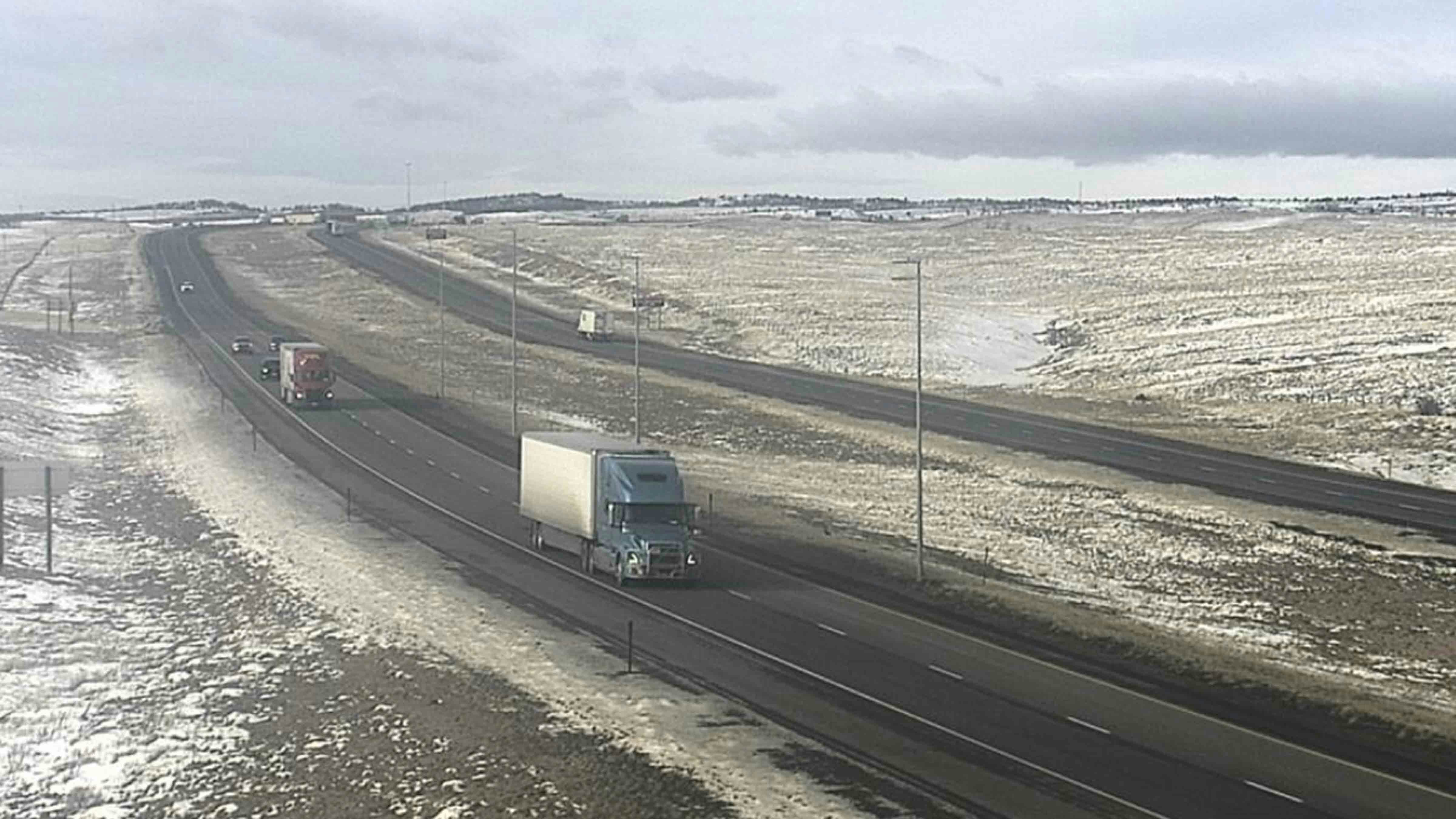GREYBULL — This tiny Wyoming community is internationally known as being the epicenter for one of the richest caches of prehistoric dinosaur fossils. The finds that are preserved here have led to groundbreaking discoveries about dinosaurs, the planet and evolution.
Now the two leading museums in Greybull want to bring some of those treasures back to Wyoming.
The Greybull Museum and Big Horn Basin Dinosaur and Geoscience Center are uniting for a modestly ambitious project: raising money for a project that would revitalize both museums while bringing Greybull more of the recognition it’s earned but has never fully received.
The future Greybull Dinosaur Museum situated along Greybull’s main drag is designed to be a modest reflection of the region’s spectacular contributions to the world of science with a mission to give Greybull residents and all Wyomingites another point of pride in their state.
“We see it as the complete synergy for the similar facilities,” said Greybull resident Nolan Oneal. “It should be pretty exciting for people.”
A Good Exporter
Oneal is one of the board members of the Big Horn Basin Dinosaur and Geoscience Museum, which has been passionately promoting the deep history of deep time that made Greybull a scientific goldmine. The non-profit is pursuing its most ambitious project, launching a new capital campaign this week with a presentation to the Greybull Town Council.
The Geoscience Museum is working with the Greybull Museum, down the block and across the street, to get the funding for a new facility to be built adjacent to the existing Greybull Museum. The Greybull Dinosaur Museum would highlight the paleontological and archaeological history of the region in the place where it all happened.
“The quarries and the dig sites in this area have produced some of the world’s most complete, unique, and scientifically important fossil collections,” Oneal told Cowboy State Daily. “That statement alone gets some people's attention.”
It started in the 1930s with the expeditions of Barnum Brown, known as “Mr. Bones,” for his extensive paleontology experience. Brown worked for the American Museum of Natural History (AMNH) in New York City and is best known for finding the first specimens of Tyrannosaurus rex.
Brown came to Greybull intent on finding and excavating two dinosaur skeletons. He found over 3,000 bones in the Howe Quarry and spent years getting them out of the ground and shipping them to New York.
The bonanza continued into the 1990s when Swiss paleontologist Kirby Siber continued digging in the Howe Quarry and other sites around Greybull. His discoveries became centerpiece exhibits in multiple museums.
“We’re a great exporter,” said Eric Kvale, president of the Geoscience Museum. “We export a lot of things. And things we export in great abundance are dinosaurs and fossils.”
Greybull dinosaur discoveries are centerpiece exhibits in museums like the AMNH, the Smithsonian Institution in Washington D.C., the Sauriermuseum Aathal Museum in Switzerland., and the Fukui Prefecture Museum in Japan, the third-largest dinosaur museum in the world. The list goes on, and every year, museums return to the region to find more fossils for their collections.
These museums and many others have more real-fossil skeletons of Wyoming dinosaurs standing in a single room than Wyoming has on display in the entire state. We’re talking about skeletons of Wyoming’s own dinosaurs, real or replicas.
“Think of the prominent national museums (where) these things are all over the world,” O’Neal said, “and not here.”
Bringing It Back
The Big Horn Basin Dinosaur and Geoscience Museum has desired to bring some paleontological glory back to Greybull in a way everyone could appreciate. Now, the museum has a plan and found the perfect partner.
The Greybull Museum, in the same building as the Greybull Library, has been grappling with its future for quite a while. A modest collection of fossils, archaeological artifacts, and objects from Greybull's recent history has filled the space to capacity.
After a burst pipe threatened the conservation of its artifacts, the Greybull Museum's board started developing its own plans to expand and upgrade its facilities. When the Geoscience Museum suggested a partnership, the Greybull Museum was eager to join.
“(There) was always a desire to expand the museum,” said Eddie Johnson, Vice Chairman of the Greybull Museum. “However, the funds were not there. With the Geoscience Center, we're cooperating to try and expand so we can bring some of the materials from this part of the world into town.”
A successful capital campaign for the Greybull Dinosaur Museum would see a new structure built on land adjacent to the Greybull Museum. The new structure would include full-sized dinosaurs, interpretive exhibits, a media room, a gift shop, and a laboratory.
The renderings of the museum depict a simple but eye-catching design, with silhouettes of dinosaurs adorning the exterior walls. Floor-to-ceiling windows would allow guests to peer inside and see the dinosaur skeletons roaming the interior. A large statue of a dinosaur skull would loom near the entrance.
Four dinosaur skeletons, all discovered in Greybull, have been selected for the new exhibit: a Stegosaurus, an Allosaurus, a long-necked Kaatedocus (a dinosaur only found in northern Wyoming), and “Baby Toni,” the smallest, most complete juvenile sauropod ever found.
But the dinosaur exhibit Kvale is most excited about bringing to Greybull is a dinosaur nest found by paleontologists from the Smithsonian. The one-of-a-kind discovery is already on display at the Smithsonian, which recently finished a $110 million renovation of its paleontology exhibits.
“Seven million people walk past our dinosaur nest site annually at the Smithsonian,” Kvale said. “And unless somebody from Greybull goes there, they will never see it.”
The skeletons would all be replicas of the original fossils. Both Oneal and Kvale hope that once the new facility is finished, they can bring some of the actual fossils back on loan from the museums where they currently reside.
For the Greybull Museum, a new facility would create more space to display and store artifacts. Johnson is particularly excited about the possibility of new exhibits and better management of the museum’s extensive collection of indigenous artifacts from the region.
“One of the things that we need is a bigger building,” he said. “Expanding will allow us to expand the archaeological materials we have in storage. We have a storage shed and a cargo shed out back that are full of, you know, archaeological things from this area.”
Growing For Greybull
As exciting as a new dinosaur museum is, Oneal and Kvale said the new project is only possible with the support of the town and people of Greybull. Luckily, they’ve already got it.
The Greybull Town Council and Mayor Myles Foley are enthusiastic about the venture and pledged their support to its success. Based on the visitation at the Geoscience Center’s current location, they believe the new project will be successful.
“We think about how many people will make the trip to Yellowstone,” Oneal said. “That's how many people go through the Smithsonian. They’re not all going to come here, thank goodness, but we wouldn't mind seeing a few.”
For Kvale, it’s also about preserving an essential element of Greybull’s history. Many life-long Greybull residents are surprised by how much their community has contributed to the wider world.
“People come in, and they're gobsmacked,” he said. “We’ve had people who have lived in Greybull for a big part of their adult life come in and say, ‘We didn't know this existed.’”
The key is a modest approach. There are enough Greybull treasures to fill massive museums many times over, but that’s not Greybull as it is today.
“We’ve been exporting and adding to the scientific knowledge,” Oneal said. “Then the energy starts wanting to come back here. We’ve seen it at other locations, and it's definitely there. That's a little bit of what we want to capture. It'd be unique to this area, but it would be on national quality.”
The first step will be pursuing a grant from the State Lands and Investment Board to fund the project's first phase. A new website, bighornbasindinos.org, has been launched to promote the capital campaign. The project already has raised 35% of the money needed for a replica of Big Al II the Allosaurus.
After a century of exports that have benefitted the world with knowledge, there could finally be a prominent place in the heart of Greybull for the world to revel in its riches.
“We’re excited about the possibility,” Johnson said. “We have dinosaurs that came from this area that are in museums all over the world. And we have an opportunity now to bring them here. It’s a realization that something could be world-class for this area.”
Andrew Rossi can be reached at arossi@cowboystatedaily.com.

